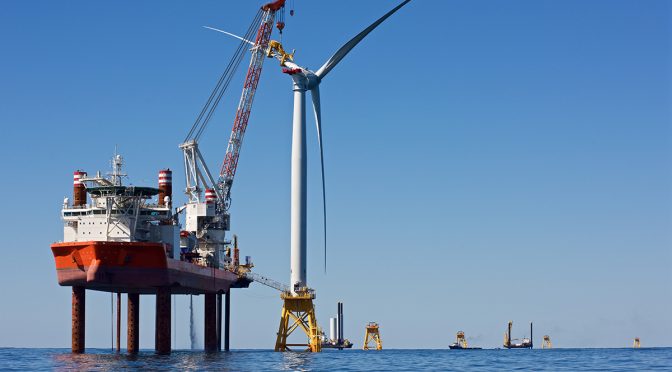Offshore wind farms have come a long way since the first commercial offshore wind farm was built in 1991 in Vindeby, Denmark. With the global demand for clean and renewable energy sources on the rise, offshore wind energy has become an increasingly attractive option for countries looking to diversify their energy mix and reduce their carbon footprint. As a result, there has been a significant amount of research and development in the field of offshore wind farm technologies, leading to numerous advancements that have improved the efficiency, reliability, and cost-effectiveness of these systems.
One of the most significant advancements in offshore wind farm technology is the development of larger and more powerful wind turbines. In the early days of offshore wind energy, turbines were relatively small, with capacities of around 450 kilowatts (kW). Today, however, turbines with capacities of up to 14 megawatts (MW) are being deployed, with even larger models in development. These larger turbines are capable of generating more energy per unit, which helps to drive down the cost of offshore wind energy and make it more competitive with traditional fossil fuel-based energy sources.
Another key development in offshore wind farm technology is the improvement in foundation design. Early engineers have developed several alternative foundation designs, including gravity-based foundations, jacket foundations, and floating foundations. These new designs have allowed for the construction of offshore wind farms in deeper waters, opening up new areas for potential development.
The advancement in subsea cable technology has also played a crucial role in the growth of offshore wind energy. The transmission of electricity from offshore wind farms to the onshore grid requires the use of subsea cables, which must be able to withstand the harsh conditions of the marine environment. Recent developments in subsea cable technology have led to the creation of more durable and efficient cables, which has helped to reduce the cost of offshore wind energy and improve its overall reliability.
Digitalization and the use of advanced analytics have also played a significant role in the evolution of offshore wind farm technology. The integration of sensors and monitoring systems into offshore wind turbines has allowed for the collection of vast amounts of data, which can be used to optimize the performance of the turbines and identify potential maintenance issues before they become critical. This has led to improved efficiency and reduced downtime for offshore wind farms, further driving down the cost of energy production.
In addition to these technological advancements, there have also been significant improvements in the installation and maintenance processes for offshore wind farms. The development of specialized vessels for the installation and maintenance of offshore wind turbines has helped to streamline these processes and reduce the overall cost of offshore wind energy. Furthermore, the use of advanced robotics and automation technologies has allowed for more efficient and safer maintenance operations, reducing the need for human intervention in the harsh offshore environment.
Looking ahead, the future of offshore wind farm technology appears to be bright, with numerous research projects and pilot programs underway to further improve the efficiency and cost-effectiveness of these systems. Some of the most promising areas of research include the development of even larger wind turbines, the integration of energy storage systems into offshore wind farms, and the use of advanced materials and coatings to improve the durability and performance of offshore wind turbines.
In conclusion, the rapid advancements in offshore wind farm technology have played a significant role in the growth of this clean and renewable energy source. As the global demand for clean energy continues to rise, it is likely that we will continue to see further improvements in offshore wind farm technology, helping to drive down costs and make this form of energy even more competitive with traditional fossil fuel-based energy sources.


